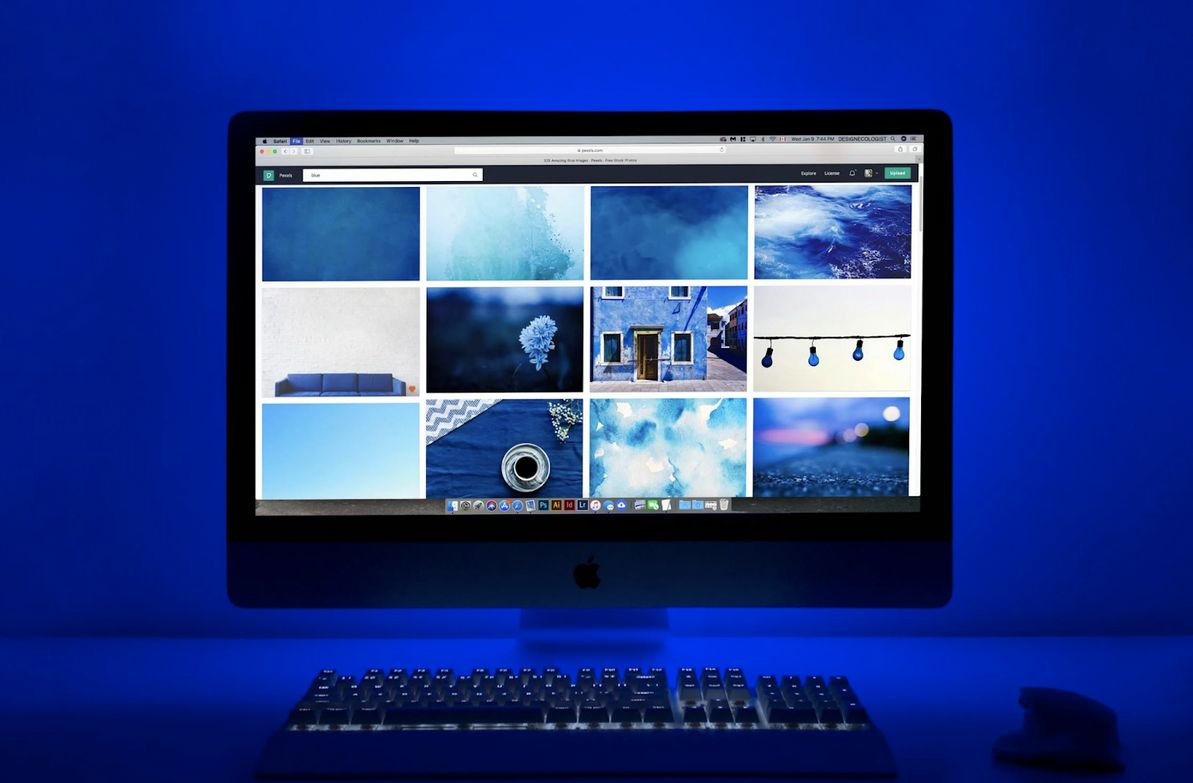The average person spends several hours each day looking at screens—phones, tablets, computers, and TVs. This extended exposure to digital devices has brought increased awareness of the effects of blue light, a high-energy visible light emitted by screens. While natural exposure to blue light during the day can help regulate the sleep-wake cycle, too much of it, especially in the evening, can lead to eye strain, disrupted sleep, and long-term discomfort. Fortunately, simple adjustments can reduce these effects and support better eye health.

Wear Glasses Designed to Filter Blue Light
Protecting your eyes starts with a practical step: using eyewear made for screen use. One of the easiest and most effective ways to reduce exposure is by wearing blue light glasses, which are designed to filter out the high-energy wavelengths that can contribute to eye fatigue and disrupted sleep patterns. These glasses are particularly helpful for people who spend long hours in front of screens for work or study.
Many of these lenses have a subtle tint and an anti-reflective coating, helping to cut glare and reduce the intensity of digital screens. Wearing them consistently during screen time can minimise discomfort, especially for those who already experience dryness or headaches during prolonged use. Some models are available in prescription form, combining vision correction with protective filtering, making them suitable for daily wear.
Adjust the Lighting Around You
Lighting plays a large role in how screens affect your eyes. Harsh overhead lights or dark environments can make it more difficult for your eyes to adapt, leading to squinting and strain. A room that’s too dim can cause the screen to appear overly bright, while very strong lighting might reflect off the screen and create glare.
One simple way to improve comfort is to balance the lighting in your workspace. Use warm-toned bulbs in lamps or ceiling lights, and place light sources so they don’t shine directly onto your screen. Position your device so it doesn’t reflect light from windows or lamps. Some people also find it helpful to use task lighting—a small, focused lamp that adds clarity without flooding the entire room.
Use Screen Filters and Device Settings
Modern devices come with built-in tools to reduce blue light output, and external accessories are widely available to support this function. Most smartphones, tablets, and computers now offer a “night mode” or “blue light filter” setting. This feature alters the screen’s colour temperature, reducing blue light and shifting it toward warmer hues. Turning on this feature in the early evening can support more restful sleep by aligning better with natural circadian rhythms.
There are also screen protectors specifically designed to filter out blue light. These can be applied directly to a device’s display, offering protection without affecting screen clarity or touch sensitivity. For desktop setups, clip-on filters for monitors are another option. These accessories are a good addition for anyone who shares their screen with others or works in different environments throughout the day.
Take Regular Breaks to Rest Your Eyes
Constant screen use can quickly lead to tired eyes, even with protective tools in place. Giving your eyes a break is one of the simplest yet most effective methods of reducing strain. One popular approach is the 20-20-20 rule: every 20 minutes, look at something 20 feet away for at least 20 seconds. This encourages your eyes to relax and refocus, preventing them from locking into the close range required by screens.
During these breaks, try blinking more deliberately to keep your eyes moist, especially in air-conditioned or heated environments that tend to dry them out. Stretching or walking during screen breaks also helps your posture and improves circulation, which can reduce overall fatigue. Keeping a water bottle nearby can remind you to stay hydrated, further supporting eye comfort.
Limit Screen Time Before Bed
Exposure to screens in the evening can interfere with sleep quality by suppressing melatonin production, the hormone responsible for signalling the body that it’s time to rest. Many people check their phones or watch videos before sleep, which extends exposure to stimulating light and content.
Establishing a screen curfew an hour or two before bedtime can support a more natural transition into sleep. Reading a book, journaling, or listening to music are gentle alternatives that don’t involve bright displays. If avoiding screens completely isn’t realistic, dimming the screen brightness or activating a night mode can reduce the intensity. Adjusting your evening routine in this way may lead to deeper and more consistent rest.
Minimising blue light exposure doesn’t require complex solutions or expensive tools. By becoming more aware of daily habits and making mindful adjustments, anyone can take better care of their vision while navigating the demands of a screen-filled world.



